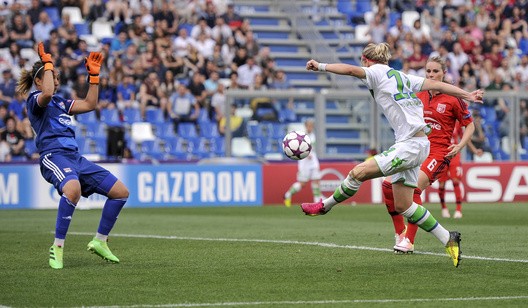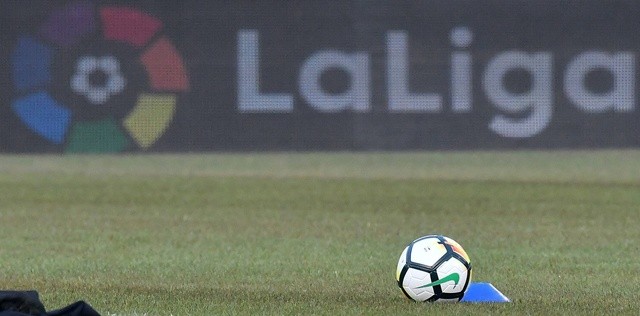Interview: “Those clubs that see the real value that women’s football creates will maintain their investment”

PA Images
The positive trajectory of Women’s football might suffer a set-back due to the financial consequences of the CV-19 pandemic. But those clubs with a long-term strategy will continue to be supportive.
Laura McAllister, a former Wales international and currently Professor at Cardiff University, feels that the emphasis should be on improving contracts and working conditions, and also on modernising the governance of the game of football.
McAllister is reluctant to use the term “women’s football”. “I really don’t buy the divide. Football is a global game that should be equally accessible to girls and boys and to both men and women.
5 August 2020 - 1:36 PM
Women's professional football has been in the ascendancy over the past few years, certainly from the perspective of profile and public awareness. The prominent competitions such as the World Cup and European Championship have attracted mass media attention, while one-off events have seen big crowds attend local derbies in major stadiums.
The coronavirus stopped football in its tracks, creating an air of uncertainty and questions about sustainability. There are genuine and understandable fears that clubs, many of whom underpin the development of their women’s teams at a loss, might reprioritise revenue towards their main sources of income, thus compromising the positive trajectory of the women’s game?
Existential threat
Laura McAllister, a former Wales international and currently Professor of Public Policy and the Governance of Wales at Cardiff University, believes it would be short-sighted of clubs to sacrifice their women’s teams.
“Those clubs that see the real value that women’s football creates will maintain their investment, but there is a real possibility that a redirection of funds could happen. Some would say that football has become too greedy at the top level and over-focused on the elite end of the game,” she says. The dilemma facing football has been recognised by many people within the game, notably the player’s union, FIFPro, who called the pandemic an “existential threat” to the women’s game.
While the men’s game, notably the Premier, resumed with a behind-closed-doors approach, the WSL was stopped, resulting in Chelsea being awarded the title. “I think the English Football Association got it about right,” says McAllister. “Public and player safety had to be the priority. At present, it looks as though the WSL will resume later this year, taking a similar stance to the Premier League.”
Calls for equality
The financial impact, in terms of reduced matchday income and possible lower levels of commercial appeal, will undoubtedly create problems for some women’s teams, but the parent clubs have been covering the losses that Women’s Super League (WSL) teams make. At the top end, women’s football doesn’t pay for itself and wages often absorb a very high percentage of income. Manchester City, for example, have a wage-to-income ratio that exceeds revenues and some clubs’s ratios are even higher.
In England, the wage structure is considerably behind the US and Scandinavia – calls for equality, such as the drive in the US and the very visible protests led by Megan Rapinoe, are currently inappropriate in the WSL. McAllister feels, however, that the emphasis should be on improving contracts and working conditions, and also on modernising the governance of the game of football.
“It would be hard to argue that we don’t need many more women in senior executive positions in football, from national governing bodies to FIFA and UEFA. As long as women’s football is largely run by men, we will never have fair and equal treatment,” she insists.
More imaginative promotion
The image of women’s football has improved significantly, but McAllister acknowledges that the domestic game still needs to be more broadly supported. In 2018-19, the average crowd for a WSL game was 1,010 and although the gates were probably higher in 2019-20, the figures were swollen by the “special day” fixtures played at Premier League grounds such as the 38,000 that saw Spurs against Arsenal, 31,000 for the Manchester derby and the 24,000 that attended Chelsea v Spurs.
“The appetite is growing but we don’t have huge crowds. We need more imaginative promotion and free tickets for the youngest children to get people interested. We can learn a lot from how other countries are dealing with football, such as the Netherlands, France and the USA.”
McAllister sees many possibilities going forward, however. “Broadcasting offers a lot of opportunities for women’s football, we’ve only just started when it comes to the creation of new media content and the way games are covered. It could be a very exciting future,” she says.
Interestingly, McAllister is reluctant to use the term “women’s football”. “I really don’t buy the divide. Football is a global game that should be equally accessible to girls and boys and to both men and women. The game is the same for both sexes and should be in all aspects from playing, organising, running and in making transformational decisions. The problems facing women’s football are similar to other sports. It will always be vulnerable while women do not participate fully in the running of the sport and that needs to change. In a football context, clubs should realise the enormous benefits from embracing and allowing their women’s divisions to flourish.”

